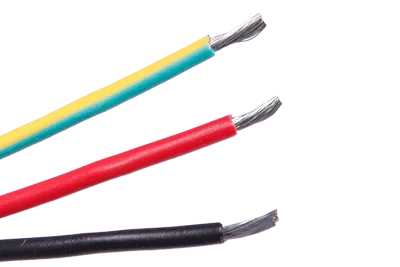QL-Custom used 4 different Wire Conductors for customers: Tin Plated Copper, Nickel Plated Copper, Silver Plated copper and Constantan (Metal Alloy). For the past years we committed to research and find out what kind of conductors operating what level temperatures and what industries should serve.

>> Tin Plated Copper
Tinned copper Wire Conductors is divided doubles, one is plating before stranding, another is stranding before tinned , tinned stranded wire is conducive to the flexibility of the wire, which is just the opposite, the hardness is relatively large, suitable for special connection in the cable. Tin in the air to form a tin oxide film to prevent further oxidation, tin and halogen can also form a similar role in the film.
Which has both good corrosion resistance, but also a certain degree of strength and toughness, tin also has a role is not to allow the conductor frayed, easy welding or perforation in the electrical instruments connected.
>> Nickel Plated Copper
Nickel-plated copper is a process of nickel plating on wire conductors. QL-Custom uses this conductor to provide customers with high-temperature wire, because nickel can withstand higher temperatures than tin, so the commonly used Teflon material to extrude out of the form made of high temperature wire. But this Wire Conductors tail processing is not easy to plated with the tin, so we use stainless steel flux can solve this problem.
>> Silver Plated Copper
>> Constantan Conductor
Constantan is not nickel plated on the copper conductor surface, but from 27% to 30% or 40% of the nickel VS copper conductors. Wire Conductors can be made as a negative electrode with other conductors can be made thermocouple compensation wire, because of its resistance changes can test the temperature.
Wire Conductors and wire widely used in shipbuilding, chemical, electricity, precision instruments, medical equipment and other departments of the corrosion structure. Some copper alloy have special electrical properties that can produce resistive elements, thermocouple materials and compensating wires.